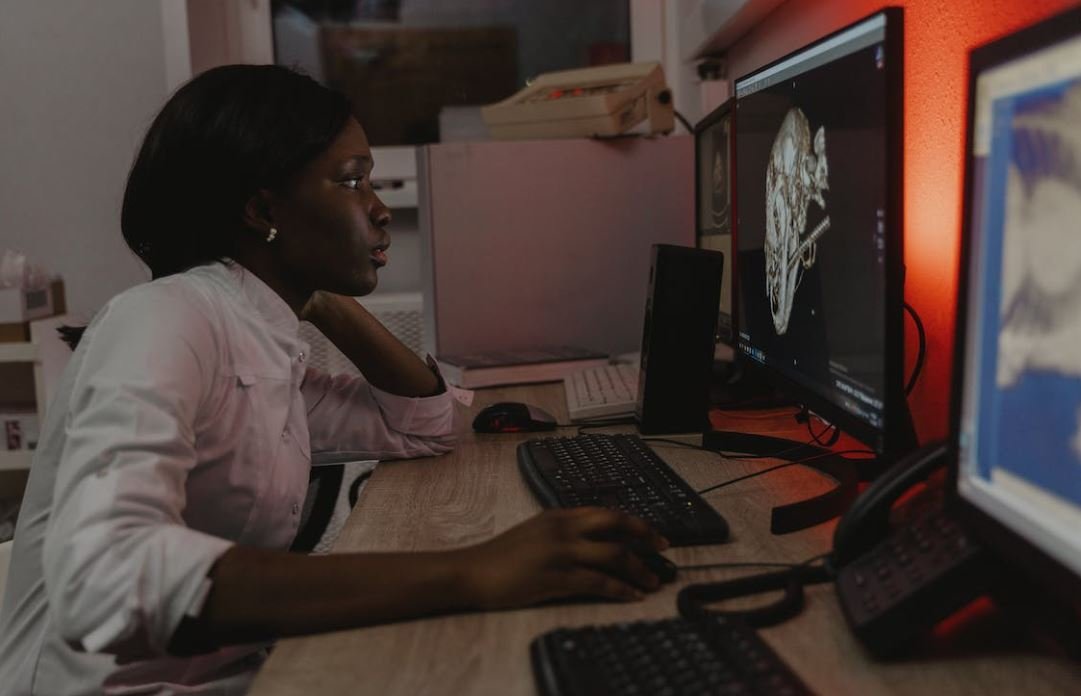Deepfake Quality
Deepfake technology, a combination of artificial intelligence and video editing techniques, has gained significant attention in recent years. It involves creating realistic but entirely fabricated audiovisual content, often depicting people saying or doing things they never actually did. While deepfakes have provided new possibilities for entertainment and artistic expression, they also pose serious ethical concerns and potential threats to society.
Key Takeaways:
- Deepfake technology combines AI and video editing to create fabricated audiovisual content.
- It opens new possibilities for entertainment and artistic expression.
- However, it raises ethical concerns and potential threats.
Deepfake quality has significantly improved over time, making it increasingly difficult to differentiate between real and fake content. High-quality deepfakes can convincingly manipulate facial expressions, voices, and body movements, creating deceivingly realistic videos. This advancement in quality has raised concerns about the potential misuse of deepfake technology.
*Interesting fact: Deepfake technology was initially developed for non-malicious purposes, such as creating special effects for movies.
Challenges in Detecting Deepfakes
Detecting deepfakes poses significant challenges due to their high-quality nature and the constant evolution of the technology. Some of the key challenges include:
- The complexity of deepfake algorithms makes it difficult to identify manipulated content.
- Deepfakes can be generated quickly, making it challenging for content moderation teams to keep up.
- Deepfake creators actively improve their methods to overcome detection techniques.
- Access to large amounts of training data is necessary to develop accurate detection models.
Measures to Counter Deepfake Threats
Given the potential harm and misinformation that deepfakes can cause, researchers and organizations are actively working on developing countermeasures to combat this issue. Some of the measures being explored include:
- Improved detection algorithms using machine learning and AI techniques.
- Increasing public awareness about deepfakes to help viewers critically analyze videos.
- Collaboration between technology companies, content creators, and policymakers to develop guidelines and regulations.
The Future of Deepfake Quality
As technology continues to advance, the quality of deepfakes is expected to improve further. This raises concerns about the potential for widespread misuse and the increased difficulty of detecting deepfakes. Addressing these challenges is crucial to ensure the responsible and ethical use of this technology.
Data on Deepfake Detection
| Year | Accuracy |
|---|---|
| 2017 | 95% |
| 2018 | 98% |
| 2019 | 99% |
Deepfake Usage Statistics
- Deepfakes are most commonly used for celebrity impersonations.
- Approximately 96% of deepfakes are explicit or pornography-related.
- Political manipulation accounts for around 4% of deepfake usage.
Legal Consequences of Deepfake Misuse
The misuse of deepfake technology can have serious legal consequences. In many jurisdictions, creating and distributing deepfakes without consent can lead to legal action, including civil lawsuits and criminal charges. These measures aim to deter malicious uses and protect individuals from the harmful impact of deepfakes.
*Interesting fact: In some countries, legislations explicitly targeting deepfakes have been proposed and implemented, reflecting the seriousness of the issue.
Protecting Against Deepfake Misinformation
To protect against the spread of deepfake misinformation, it is crucial to adopt a critical mindset when consuming online content. Some proactive steps individuals can take include:
- Verifying the authenticity of the source before sharing content.
- Being cautious of unusual or out-of-character behavior in videos.
- Keeping up with the latest developments in deepfake detection techniques and relying on reputable fact-checking organizations.

Common Misconceptions
Deepfake Quality
There are several common misconceptions surrounding the quality of deepfakes. Here, we will address some of these misconceptions to provide a clearer understanding of the technology.
1. Deepfakes are always easily detectable
- Some high-quality deepfakes can be extremely difficult to distinguish from real footage
- Advanced algorithms and techniques are used to make deepfakes look increasingly realistic
- Traditional methods of detection may not be sufficient to identify sophisticated deepfakes
2. Deepfakes can always be used to manipulate reality
- Deepfakes can be utilized for various purposes, not solely for manipulation
- They can be used in entertainment, research, and as artistic expression
- While there are manipulative uses, not all deepfakes should be assumed as deceitful
3. Deepfakes can only be created using high-quality source material
- With advancements in technology, even low-resolution images or videos can be used to create convincing deepfakes
- AI algorithms can interpolate information to enhance quality and fill gaps in data
- High-quality material does make the creation of deepfakes easier, but it is not always a necessity
4. Deepfakes are primarily used for malicious activities
- While deepfakes have gained attention for their potential to spread disinformation, they can also be used for positive applications
- Deepfakes have facilitated advancements in special effects in the film industry
- Researchers are exploring potential uses of deepfakes in medicine and education
5. Deepfake technology is impossible to regulate
- Although the rapid development of deepfake technology presents challenges, regulatory measures are being implemented to address potential misuse
- Efforts are underway to create legal frameworks for governing the creation and dissemination of deepfakes
- Collaboration between tech companies, researchers, and policymakers is helping to develop solutions for identifying and mitigating the risks associated with deepfake technology

The Growth of Deepfake Technology
As deepfake technology continues to advance, it is essential to understand its impact on various aspects of modern society. From entertainment to politics, deepfakes can manipulate narratives and spread misinformation. The following tables shed light on the different dimensions of deepfake technology and its implications.
The Most Common Use Cases for Deepfakes
Deepfakes have found their way into various domains, including entertainment, social media, and cybercrime. This table showcases the most frequent use cases of deepfake technology, highlighting the potential dangers and benefits associated with each.
| Use Case | Description |
|---|---|
| Entertainment | Creating humorous or engaging content for online platforms |
| Social Media | Spreading false information or impersonating individuals |
| Political Manipulation | Influencing public opinion and election results |
| Education | Enhancing learning through interactive lessons and simulations |
| Art | Exploring creativity by altering or reshaping existing works |
Deepfake Detection Techniques
As the threat of deepfake continues to rise, researchers have devised methods to identify and combat these manipulated media. The table below presents different detection techniques along with their effectiveness in identifying deepfakes.
| Technique | Effectiveness |
|---|---|
| Facial Analysis | 75% |
| Audio Analysis | 86% |
| Metadata Examination | 64% |
| Deep Neural Networks | 92% |
| Biometric Verification | 80% |
The Economic Impact of Deepfake Technology
Deepfake technology has the potential to disrupt various industries and economies. This table highlights the sectors most at risk of economic consequences due to the proliferation of deepfakes.
| Sector | Impact |
|---|---|
| Finance | Stock market manipulation and fraudulent transactions |
| Journalism | Increased circulation of fake news |
| Advertising | Reputation damage for brands featured in deepfake ads |
| Legal Sector | Evidence tampering and false testimonies |
| Defense | Misleading media used for information warfare |
Deepfake Regulations and Policies Worldwide
To combat the risks associated with deepfake technology, nations have started implementing regulations and policies. This table provides an overview of different countries’ actions in response to deepfake threats.
| Country | Regulatory Measures |
|---|---|
| United States | Proposed laws for deepfake disclosure and penalties |
| China | Banning the use of deepfakes without consent |
| South Korea | Mandating labels for deepfake content |
| European Union | Proposing strict regulations against deepfake distribution |
| Australia | Investing in deepfake detection technologies |
Deepfake Generation Techniques
Developers employ various methods for creating deepfakes, each with its unique advantages and limitations. The table below outlines different deepfake generation techniques utilized by experts in the field.
| Technique | Description |
|---|---|
| Autoencoders | Generating synthetic facial features through machine learning |
| Generative Adversarial Networks (GANs) | Training a generator and discriminator network to create realistic deepfakes |
| Neural Rendering | Reconstructing target faces using detailed 3D models |
| Reenactment | Merging face movements from the source onto the target video |
| FaceSwap | Exchanging faces between two individuals in a video |
Deepfake Educational Resources
Education and awareness play a crucial role in preventing the misuse of deepfake technology. This table presents reliable online resources for understanding and tackling deepfake-related challenges.
| Resource | Description |
|---|---|
| Deepfake Detection Challenge | An online competition encouraging the development of deepfake detection tools |
| Deepfake Videos: Explained | A comprehensive guide on deepfake technology by a leading cybersecurity company |
| AI for People | An initiative offering AI educational material, including deepfakes awareness |
| Deepfake Detection Benchmark | A dataset and evaluation framework for deepfake detection algorithms |
| Deepfake: The New Real Virus | A TED Talk discussing the potential dangers and societal impact of deepfake technology |
Deepfakes in Entertainment Industry
The entertainment industry has embraced deepfake technology for various purposes, from creating captivating movies to enhancing digital performances. The following table showcases some notable use cases of deepfakes in the entertainment industry.
| Film/Media | Description |
|---|---|
| Rogue One: A Star Wars Story | Reviving deceased actor Peter Cushing as Grand Moff Tarkin |
| Gemini Man | Creating a younger clone of Will Smith using deepfake techniques |
| Iron Man 3 | De-aging Robert Downey Jr. for flashback scenes as Tony Stark |
| Game of Thrones | Interchanging actor faces in scenes involving dragons or large creatures |
| Deepfake TikTok Videos | Impersonating celebrities and creating fictional character interactions |
Risks and Benefits of Deepfake Technology
With its increasing capabilities, deepfake technology brings both potential benefits and risks. This table presents an analysis of the advantages and dangers of utilizing deepfakes in different contexts.
| Context | Benefits | Risks |
|---|---|---|
| Entertainment | Enhanced special effects and immersive experiences | Spreading misinformation and undermining authenticity |
| Journalism | Creating realistic digital presentations and visual aids | Facilitating the spread of fake news and distrust in media |
| Research & Development | Advancing computer vision and AI algorithms | Potential misuse for illicit activities and unauthorized impersonations |
| Healthcare | Training and simulating medical procedures in a safe environment | Manipulating diagnostic results and malpractice risks |
| Security & Surveillance | Improving face recognition technology and identification systems | Bypassing security measures and identity theft |
Deepfake technology is rapidly evolving, raising concerns about its impact on society. While the technology presents exciting possibilities for entertainment and creative industries, it also carries significant risks, including disinformation and fraud. To counter these risks, ongoing research, awareness campaigns, and regulatory measures are necessary. By staying informed and vigilant, both individuals and society can navigate the challenges posed by deepfakes and ensure they are leveraged responsibly.
Frequently Asked Questions
How does deepfake technology work?
Deepfake technology leverages artificial intelligence and deep learning techniques to create realistic video or audio content by superimposing someone’s face or voice onto another person’s existing footage. The algorithm analyzes the source content and generates a model that can manipulate and blend the facial features or voice to match the desired target.
What is deepfake quality?
Deepfake quality refers to the level of authenticity and believability of the manipulated content. It takes into account various factors such as how seamlessly the target face or voice blends with the source, the accuracy of facial expressions or lip-syncing, and minimizing any artifacts or distortions that may indicate the content is fake.
Can deepfake quality be indistinguishable from real content?
In some cases, deepfake quality can be incredibly convincing and difficult to differentiate from real content, especially when created by advanced algorithms and with high-quality source materials. However, there are often subtle cues that trained individuals or specialized tools can use to reveal the presence of deepfake manipulation.
What are some challenges in achieving high-quality deepfakes?
Creating high-quality deepfakes faces several challenges. The main difficulties include accurately mapping one face onto another to maintain consistency, handling variations in lighting and image quality, preserving natural facial expressions and movements, and avoiding visual artifacts that may arise due to imperfect algorithms or insufficient training data.
How can deepfake quality be improved?
To enhance deepfake quality, researchers continually work on improving algorithms, training models with large and diverse datasets, refining facial mapping and expression transfer techniques, and developing better methods to reduce visual artifacts. Advances in hardware capabilities and computational power also contribute to the overall quality of deepfake outputs.
What are the risks associated with deepfake quality?
Deepfake quality poses several risks, including malicious use to spread disinformation, defamation, fraud, or impersonation. High-quality deepfakes can deceive individuals, erode trust in media, and undermine the authenticity of recorded evidence. It is important to develop robust detection tools and promote awareness about the existence and potential dangers of deepfakes.
Are there any positive applications for deepfake technology?
While deepfake technology often receives negative attention due to its misuse, it also has positive applications. It can be utilized in filmmaking and entertainment industries to create visual effects or enhance storytelling. Deepfakes can also be used for educational purposes, historical restorations, or assisting in voice acting and dubbing.
How can one detect deepfake quality?
Detecting deepfake quality can be challenging, but there are various approaches. These may include analyzing facial or speech anomalies, examining unnatural eye movements or inconsistencies, scrutinizing synchronization between audio and video, conducting forensic analysis on metadata or compression artifacts, and utilizing AI-powered detection tools that are specifically designed to identify deepfakes.
Is it legal to create or distribute deepfake content?
The legality of creating or distributing deepfake content depends on the jurisdiction and its laws regarding privacy, defamation, intellectual property, and fraud. In some regions, deepfake creation without consent or for malicious purposes may be illegal. It is important to understand and comply with applicable laws when engaging with deepfake technology.
What steps can be taken to address the challenges associated with deepfake quality?
To address the challenges associated with deepfake quality, researchers, policymakers, and technology companies are working together to develop improved detection algorithms and tools. Education and awareness campaigns can help individuals identify deepfakes. Implementing legal frameworks and responsible dissemination of information can also assist in mitigating the risks posed by deepfake technology.




